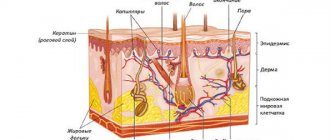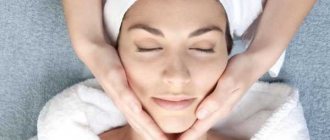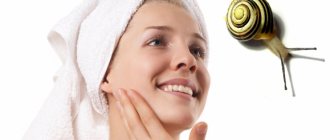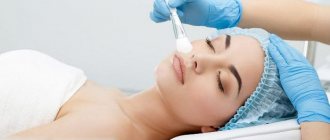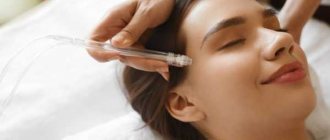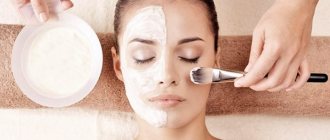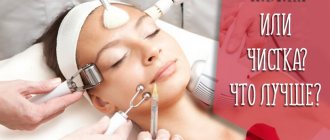In the success of a particular peel, not only your personal skin characteristics, correct adherence to the procedure protocol, competent care after it, but also the fact of pre-peel preparation play a big role.
This is why most cosmetologists are in favor of predil. Yes, for the client this may mean some inconvenience, certain manipulations at home or additional (not free, of course!) visits to the salon. But all these steps are justified, since the effect of almost any type of peeling will definitely be many times higher, and potential side effects are minimized.
The skin must be gently introduced to acids so that later it does not react to a serious procedure with long-term rehabilitation, inflammatory processes, herpes outbreaks or hyperpigmentation.
Essentially, pre-peel preparation comes down to two key goals:
- Elimination of hyperkeratosis. Thanks to proper preparation, the hydro-lipid mantle of the skin is partially destroyed, the epidermis becomes thinner and smoother. As a result, peeling penetration will be more effective and uniform.
- A gentle decrease in skin pH, due to which the acid will act less aggressively, and the pain directly during the procedure will not be so strong.
The degree and depth of impact of different peels is influenced by several factors, for example, the duration of exposure of the drug and the concentration of acid in the composition. This is why you may hear such conflicting reviews about the same procedure from different people. In this case, everything is true: it is impossible to completely predict how this or that peeling will behave on your skin. Only a specialist can answer the question of whether pre-peeling preparation is exactly what you need.
TCA facial peeling
TCA peels are so popular because they are gentle on the skin while still being highly effective. The main component of the TCA peel is trichloroacetic acid, which is combined with lactic, retinoic, salicylic and citric acid. Depending on the combination of components, you can have a mild or more aggressive effect on the skin.
No special preparation is required before facial peeling; the procedure can be performed immediately. TCA peeling is suitable for wrinkled and aging skin, helps restore it, restore elasticity and tone.
At a young age, the procedure is suitable for problem skin, helps to cure acne, pimples, get rid of posture, and is also effective against age spots. The main areas of peeling treatment are the face, neck and décolleté.
Indications for TCA peeling for the face include:
- small wrinkles formed as a result of active facial expressions;
- deep wrinkles caused by age-related changes;
- reduced elasticity;
- loss of elasticity;
- flabbiness;
- dry skin due to loss of moisture;
- pimples, acne;
- sagging skin;
- wrinkles on the forehead, nasolabial folds, wrinkles around the mouth;
- pigmentation;
- uneven complexion;
- freckles;
- increased oiliness of the skin;
- enlarged pores;
- acne scars.
Most often, this procedure is prescribed for severe rashes and acne marks, since softer peelings are available to reduce pores and reduce sebum production. With TCA peels, the return of elasticity, firmness and reduction of pores are associated effects in eliminating more serious defects.
Types of chemical peeling
It is worth considering other options before using deep acid treatments.
| Chemical Peel Options | a brief description of |
| Surface | It is done in 4 - 6 sessions using fruit, glycolic and lactic acids. This gentle effect is useful for the initial signs of aging, dryness, dull skin color, minor defects such as mild acne, acne marks |
| Median | It affects the entire thickness of the epidermis and some part of the dermis. Medium peeling is indicated for sagging skin, minor acne and for treating the effects of acne, mild hyperpigmentation |
| Deep | It completely removes the stratum corneum of the epidermis, which is why it is accompanied by pain and the formation of a crust on the face. But with its help you can eliminate deep wrinkles and very noticeable skin defects. After all, such a traumatic effect stimulates dermal cells to actively divide |
Medium TCA peel
Trichloroacetic acid is used in 15% and 30% concentrations, which allows peeling not only superficially, but also to affect the deeper layers of the skin. By weakening or enhancing the effects of acid, TCA peeling is a powerful tool of complex action, which has the following properties:
- cleansing the top layer of the skin;
- regenerating properties;
- peeling affects the skin like a burn, which gives a signal for the intensive production of new cells;
- reduces the production of subcutaneous sebum, which helps reduce the inflammatory process and also leads to narrowing of pores;
- improves blood circulation and metabolic processes in cells, helping to improve collagen production;
- antimicrobial and bactericidal action.
Medium peeling helps to get rid of not only fine wrinkles, but helps reduce deeper ones, and is also effective against fresh stretch marks on the body. Copes with acne scars, age spots and skin rashes.
Disadvantages of chemical peeling
Phenol peeling provides deep cleansing by causing a burn to the skin. Therefore, it is worth talking about the disadvantages of the procedure:
- pain accompanying healing after it;
- unpredictability of the result (taking into account complications);
- long recovery period.
Exposure to compounds containing phenol is indicated only for skin problems. It is useless when it is necessary to remove excess fat or ptosis of soft tissues. In these cases, surgical lifting is more effective.
Similar articles
- TCA facial peeling: how to do medium, chemical...
The TCA facial peeling procedure (medium, deep or chemical, yellow) makes facial skin clean and eliminates many problems. What will be the effect day by day? What does the skin look like after? Read more - Diamond facial peeling: before and after results on the skin...
Diamond facial peeling will help smooth out fine wrinkles and get rid of emerging skin problems. The results before and after are not immediately noticeable. What is the truth and myth of the procedure? How often do sessions? Read more
- Laser carbon peeling: before and after effect...
The carbon peeling procedure is carried out using a device with nanogel. The face before and after changes significantly. What are the contraindications and consequences of the procedure? Why did acne appear? What are the pros and cons of the procedure? How often can it be done, from what age? Is it possible at home? How long does the procedure take? Read more
- Care after TCA peeling: how to care for your facial skin...
Proper care of your facial skin after TCA peeling will help you avoid unpleasant complications. What to do day by day after the procedure? What are the features of care after medium and deep peeling? Why do you need to wash your face with acidified water? Memo to the patient: what procedures can be done, what cannot be done and why. Read more
Preparing for TCA peeling
Any type of chemical peel requires preliminary preparation of the skin, including TCA peeling. First of all, a consultation is carried out with a cosmetologist who examines the skin, assesses its condition and existing problems. Then he gives recommendations on how to prepare the skin for the procedure, which must be started 3-4 weeks in advance:
- During this time, you should avoid harsh contact with the skin: do not use sponges, brushes, sponges;
- use creams with sunscreen properties (SPF at least 50);
- use creams and gels based on fruit acids;
- 1-2 weeks in advance, the cosmetologist prescribes a superficial peeling procedure, which can maximally prepare the skin for the middle peel;
- Start taking antiviral medications a few days in advance if there are frequent manifestations of the herpes virus.
Before the procedure, it is better to avoid visiting the solarium, sauna and steam bath for several days, and also to avoid additional irritation and damage to the skin, avoid any type of hair removal, shaving and plucking of eyebrows.
Where does pre-peeling preparation begin?
One of the key factors by which you can identify a good cosmetologist is related to a detailed history taking. A professional will definitely evaluate your type of aging, pay attention to the presence of inflammatory processes and age spots on the skin, and evaluate its elasticity and turgor.
Examination by a cosmetologist is an important stage in preparation for peeling.
Of course, the cosmetologist must have a clear understanding of your health status, since this is the only way he can draw a conclusion about your contraindications for peeling. For example, if you often experience exacerbations of herpes, it is recommended to first carry out antiviral therapy, and only then plan peeling. The beauty salon should also ask you the following questions:
- Do you smoke?
- Are you allergic to any substances?
- Have you recently been exposed to x-rays?
- Have you had a face lift procedure or other plastic surgery on your face?
- What medications are you currently taking?
- What cosmetic products have you used in the last few months?
A specialist must definitely assess the condition of your capillaries, since subsequent skin regeneration depends on the level of microcirculation. If vascular weakness is associated with a lack of microelements or fatty acids, it is recommended to start taking a multivitamin complex in advance, as well as omega 3-6-9 preparations.
A cosmetologist may suggest that you do 1-2 sessions of mesotherapy or biorevitalization 2-4 weeks before the middle peeling. Sometimes, in parallel with these procedures, ultrasonic facial cleansing is prescribed. This tactic will greatly improve the course of the post-peeling period, and will also enhance skin regeneration.
As a rule, every cosmetic brand intended for peeling contains pre-peel preparation products. Yes, as a result, the final cost of the procedure increases significantly, but this stage should not be neglected. It is necessary to realize that a cosmetologist’s recommendation for the use of additional professional products is not a “money scam,” but the most competent adherence to all the rules for peeling, making the procedure as effective and safe as possible.
How is the procedure performed?
During the consultation, the cosmetologist determines the severity of the problem and the condition of the skin, based on which the composition of the solution is selected, the use of additional acids, which will have an effect on the skin to one degree or another. The higher the expression of the problem, the higher the concentration of trichloroacetic acid will be used.
The procedure takes place in several stages:
- Using a special product, a specialist cleanses the skin of sebaceous fat, cosmetics and dust.
- The leather is treated with a degreasing agent.
- The cosmetologist applies a thin and even layer of the composition. After the first layer, the patient should not experience discomfort or other unpleasant sensations in the form of burning. After applying the second and third layers, a burning sensation and, in some cases, even soreness of the skin may occur. In order to calm the skin a little, airflow in the form of a fan or fan is used. An indicator of the effectiveness and correctness of the procedure is the appearance of a white coating on the surface of the skin, which is coagulated skin protein under the influence of acids.
- Then the peeling residues are neutralized with a special product. When applying it, a reaction in the form of hissing may occur, since the neutralizer contains soda. To avoid such a strong reaction, the neutralizing agent is also applied in layers. Remains of the composition are washed off with water.
At the end of the procedure, a cream-based product is applied to the skin, which has an anti-inflammatory, antiseptic and moisturizing effect.
Stages of salon peeling procedure
It is worth noting that each salon carries out facial peeling in its own way, but schematically the stages of the procedure are the same. Having familiarized yourself with them in advance, you will feel much calmer, understanding what the master is doing at one time or another.
- The facial skin is steamed.
- Rub the chemical solution into the skin. A burning sensation and swelling may occur.
- If necessary, anesthesia is performed.
- If hardware cosmetology is used, the surface of the face is affected by brushes, ultrasound, laser, etc.
- Remains of unabsorbed product are carefully removed.
- After this, the skin is treated with an antiseptic and a soothing solution.
- During deep peeling, they may apply a bandage in the form of wide bandages, a kind of mask, which is removed within several days.
- The rehabilitation period begins, during which the skin must not be exposed to any mechanical stress or ultraviolet radiation. You may even have to go on a light diet.
If the facial peeling was not carried out in a hospital setting and you were sent home immediately after the procedure, do not be afraid of your own reflection in the mirror. There may be burns and swelling on the face, which quickly disappear if we are talking about superficial cleaning. Therefore, it is recommended to sign up for peeling before the weekend, when you won’t have to go anywhere and worry about excessive redness of the skin.
TCA peeling after peeling care by day
The recovery period after using TCA peel lasts about 4 weeks. This process depends on the additional components used, the depth of exposure, as well as the individual characteristics of the body. Skin care after peeling depends on the stage of healing:
- The initial stage of healing lasts about 1 week. During this period, the patient may experience itching and redness. At the end of the procedure, the skin looks tight and dry, but this does not prevent you from appearing outside and going out in public. It happens that every day the itching and redness only increases, in which case the doctor prescribes medications that help relieve discomfort.
- The next day after peeling, the skin becomes covered with a thin film, and after a few more days it turns into a crust. The disadvantage of this period is that the crust begins to come off unevenly and at different times. It disappears faster from the part of the face where there are active movements of facial expressions: around the mouth, on the chin and cheeks.
- Gradually, peeling begins to occur all over the face. During this period, the skin must be treated with creams that have antiseptic and moisturizing properties. These products include foams and sprays, for example, Panthenol.
On the first day after the procedure, you cannot wet your face; you can start washing your face only on the 3rd day without using various foams and fat-containing glues. For complete restoration, ampoule serums and concentrates are used for washing.
During the recovery period it is prohibited:
- be exposed to sunlight;
- visit the solarium;
- steam your face and apply compresses;
- go to the bathhouse, sauna and perform other thermal procedures;
- you can’t touch your face;
- use homemade scrubs;
- peel off the crust.
The last stage of recovery lasts for several more weeks, during which the normalization of metabolic processes in skin cells occurs, the production of elastin and collagen, cell regeneration, and the strengthening of local immunity. During this period, it is important to use moisturizing and nourishing creams.
Peeling pads from Korea and their composition
Pads are not necessarily about exfoliation. For example, there are also moisturizing products soaked in caring ingredients. But peeling pads are impregnated with a composition containing AHA, BHA or PHA acids - they are the ones that dissolve and remove dead skin cells. It may also contain vitamins, hyaluronic acid, centella asiatica, various extracts and other ingredients.
Due to the unusual format of the product, it is not immediately clear what peeling pads do and what they are needed for. Let's figure it out 
- Cleanses and exfoliates the skin;
- absorb sebum;
- remove blackheads;
- gently lighten pigmentation and post-acne;
- even out microrelief and tone;
- renew the skin and improve complexion.
These special facial peeling pads can also solve a specific problem - for example, tighten pores or fight inflammation. For directional action, you can select pads with the desired components.
That is, due to the gentle exfoliation of the stratum corneum of the epidermis, the skin is renewed, becomes soft, smooth, even and radiant. Does it look like a regular peel? Yes, only in a convenient format of soft pads. Each disc is impregnated with a special composition so that you can use the peeling pads exactly once. At the same time, the serum does not flow down the face and does not stain clothes. You just need to wipe your skin with it - it only takes a few seconds. Typically, brands produce peeling pads in sealed jars of 30, 60 or 70 pieces - they are convenient to take with you on the road (but there are also pads in individual packages).
Does it look like a regular peel? Yes, only in a convenient format of soft pads. Each disc is impregnated with a special composition so that you can use the peeling pads exactly once. At the same time, the serum does not flow down the face and does not stain clothes. You just need to wipe your skin with it - it only takes a few seconds. Typically, brands produce peeling pads in sealed jars of 30, 60 or 70 pieces - they are convenient to take with you on the road (but there are also pads in individual packages).
Contraindications
Any methods of rejuvenation, including the use of chemical peels, have contraindications:
- the procedure cannot be carried out in the spring-summer period, as well as in early autumn;
- diseases of viral etiology: herpes, papillomas and warts;
- fungal diseases;
- if poor tolerance to peelings was previously noted;
- tendency to form keloid scars;
- hyperpigmentation, which has a large area of distribution;
- tendency to allergies;
- pregnancy and lactation;
- oncological diseases;
- the presence of wounds, cuts and abrasions on the skin;
- skin diseases;
- diabetes;
- recent operations on the facial skin;
- rosacea
You must inform your cosmetologist about the presence of any diseases or taking medications; this will help to avoid many complications.
Technique
A specialist knows how to do deep facial peeling, because the procedure is not carried out independently. Usually the patient is told about the progress in advance. The manipulation sequence looks like this:
- The skin is first cleansed of cosmetics and impurities. Then the keratinized particles are removed with a sponge and an abrasive agent.
- The procedure is painful, so the patient is given anesthesia. It can even be general, in which case the anesthesiologist works first, and then all the manipulations with the face take place. Next, it is wiped with a mixture of acetone and alcohol.
- When the skin is ready, a preparation with phenol and additional components is applied to it. It will actually provide peeling. This composition is covered with a product on top, which then forms a film on the face. It must be kept for at least a day, and sometimes longer. The patient spends this time in the hospital.
- After the required period, the doctor removes the film. A peeling layer of skin remains on it. The face is a wound surface, so a composition with antibacterial and healing components is applied to it.
To learn how to perform a medium chemical facial peel, watch this video:
Side effects and complications
Immediately after the procedure, side effects may occur, which in most cases are normal:
- swelling in the treated part;
- skin redness;
- tightness and dryness of the skin;
- peeling.
All these unpleasant sensations are eliminated with the help of nourishing and moisturizing creams prescribed by the doctor.
But sometimes, due to the individual characteristics of the body or the inexperience of the cosmetologist, the following complications may arise:
- lack of effect - pigmentation does not always go away after the procedure, post-acne scars and other defects may remain due to the characteristics of the body;
- increased skin sensitivity;
- pigmentation, post-inflammatory or traumatic;
- the appearance of white spots on the skin;
- uneven surface at the site of scar removal;
- ineffectiveness in the treatment of acne;
- scar formation.
The risk of developing such complications increases with age due to a decrease in the regenerative ability of the skin after injury.
